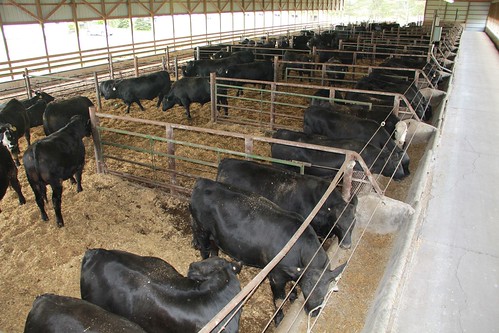
It is amazing to see such an array of meats available in today’s grocery stores. Traveling across the country in my role at USDA, I hear from so many folks that want to know where their beef comes from, what the animal was fed or how was it raised. I also know farmers have a real commitment to their crops and animals and are happy to share their stories with customers.
Farmers markets are one way for small producers to tell consumers directly where their products were grown or raised. However, mid-sized farms face unique challenges as they are too large to dedicate the time and resources to participate in farmers markets, but too small to compete effectively in large commercial markets. New technology could make connecting consumers to mid-sized farmers easier no matter where meat is purchased.
The Federal-State Marketing Improvement Program (FSMIP), administered by USDA’s Agricultural Marketing Service (AMS), awarded Michigan State University a matching grant in 2011 for a pilot project to explore ways to improve local and regional beef production and marketing systems. Researchers studied the process of using the information contained on the ear tag to create a two-dimensional (2D) barcode label that would follow each piece of meat destined for the consumer. The 2D barcode can store large amounts of information and can operate as a portable database when scanned by camera-equipped mobile devices. The large database could contain a wealth of knowledge that the consumer may want to know about their food.
The project created an internet-accessible database with farm, processing and animal details stored on the radio frequency identification (RFID) ear tag. The process caused little or no disruption of the routine tasks in both the farm operations and the meat processing facility. The transfer of RFID to 2D labels resulted in 100% accuracy in tracing the beef through the supply chain. Based on the modest cost of the systems tested, it appears that relatively simple traceability systems could be developed costing 1 to 2% of wholesale value.
Many research questions are yet to be answered both on the consumer side and the processing side before this technology can be widely adopted. MSU is poised to continue this work which will be of interest to mid-sized beef producers and consumers across the country.
Earlier this year, FSMIP authorized over $1 million in matching grant funds. It is yet another example of the people’s department investing in American agriculture. These funds support research projects like the MSU project to explore changes in marketing, transporting, and distributing U.S. agricultural products. USDA is committed to supporting innovative technology solutions and other means to keep up with consumer demand, making sure that the future of agriculture is bright.

